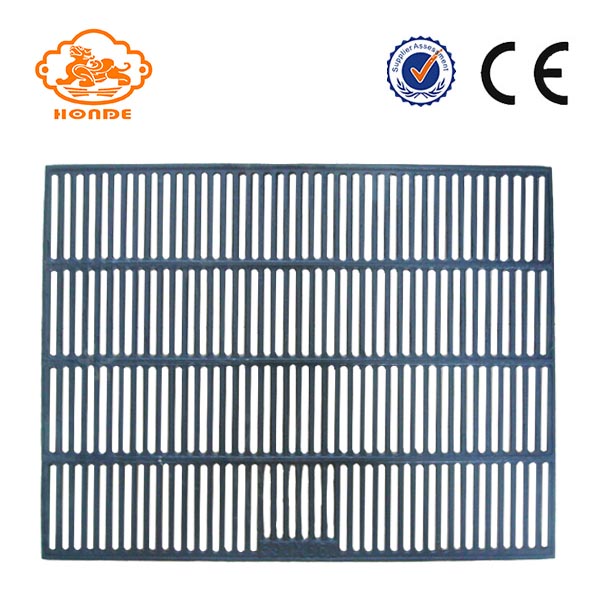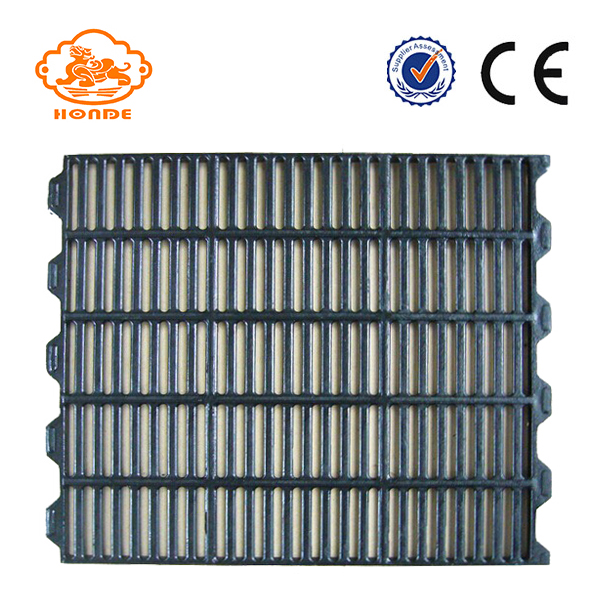Abstract: Based on his years of practice and comprehensive information, the author has described the techniques of efficient fattening of cattle and sheep.
Xinjiang is a major province of China's beef and mutton production. Fattening cattle and sheep is one of the main pillar industries of animal husbandry. It plays an important role in the animal husbandry economy. In 2005, the production of beef and mutton reached 94.11 million tons [1]. Xinjiang beef and mutton has excellent meat quality and unique flavor and is well-known. However, our cattle and sheep fattening technology is relatively backward, the fattening cycle is long, the weight gain is slow, the yield is low, and the efficiency is poor, resulting in our large animal husbandry province that is proud of “one of the five largest pastoral areas†and “the largest amount of livestock keptâ€. The supply of beef and mutton is in short supply. "Sometimes we need to adjust the price of meat from the mainland provinces and regions." Since it is difficult to meet self-consumption, it will naturally not be able to sell to the Mainland, and it will not be able to export foreign exchange. Therefore, the vigorous promotion of modern animal husbandry science and technology is the inevitable way for our region's cattle and sheep fattening industry to transform into high-quality, high-yield, and high-efficiency industries.
Based on my many years of practical experience and comprehensive relevant information, the author discussed the key technologies for efficient fattening of cattle and sheep for reference.
1 Choose a good variety
The genetic characteristics of the variety determine its meat production performance and fattening effect. Studies have shown that meat type> dual-use> wool type (milk type). Xinjiang has unique cattle and sheep germplasm resources, such as Altai sheep, Kazak sheep, Dolang sheep, Bashbai sheep, Xinjiang brown cattle and other local varieties, its adaptability, anti-adverse sex with a grid, but fattening effect, meat production performance Low, excessive tail fat, high body fat content [2], it is difficult to meet the current consumer demand. Our district has also introduced Suffolk, Dorset, Simmental, Angus, Charolais and other meat breeds. It has played an important role in improving local cattle and sheep and improving production performance, but it has not yet been cultivated. Out of your own beef and sheep breeds. Considering the actual situation at present, consideration may be given to the selection of hybrids and second-generation hybrids of improved meat and local varieties as fattening objects, such as Suffolk, Dorset, and Altair sheep, keeping their good adaptability and resistance to roughage. At the same time, it can not only improve the meat production performance, but also reduce the weight of tail fat and reduce the fat content of carcasses [3]. However, the introduction of purebred Angus and Xinjiang brown cattle (or local cattle) for crossbreeding, about the age of calves fattening Daily weight gain up to 1 ~ 1.5kg [4].
2 Choose age-appropriate cattle and sheep
Age reflects the growth and development of animals. The fattening of the fast growing stage can obtain higher daily weight gain, feed remuneration and economic benefit. A large number of relevant research data indicate that lambs> mutton sheep> aged ewes ewes; yak> adult cattle> old-age cattle. Therefore, selecting lambs and yak aged about one year before 8 months of age for fattening can not only obtain higher feed rewards, but also obtain high-quality meat products, thereby gaining competitive advantage and excess profits.
3 pay attention to gender
The traditional concept is that flailing livestock do not cast off their flesh with a strong smell and affect palatability. However, studies at home and abroad have shown that sire animals are slaughtered before sexual maturity. The content of odor substances in meat is not higher than that of castrated people, and there is no obvious effect on palatability. On the contrary, the same age of male lamb is higher than that of wolf and lamb. The daily fattening weight of female lambs is higher by 15% to 20% [5]. Therefore, as long as the fattening male cattle and sheep do not reach the sexual maturation age (8 months old sheep and 12 months old cattle) before slaughter, they do not need to castrate directly to fatten.
4 Choose a good weight for fattening
Some people used the Latin square design to statistically analyze the relationship between the initial weight of fattening and daily average weight gain. The results showed that there was a strong positive correlation between them (r>0.8), indicating that the size of the initial weight of fattening directly affects the fattening effect. Practice has proved that, in order to achieve the desired fattening effect, the initial weight of the fattening sheep should be >20kg and the cow >150kg.
5 fattening period should be suitable
The fattening period refers to the number of days of formal fattening without the adaptation period. The fattening period should be determined according to the weight gain rules of fattening animals. A large amount of research data shows that regardless of the animal or breed, the daily weight gain shows an “S†curve with the change of the fattening period[6], ie, the weight gain in the early period is faster, and it starts to decline after maintaining a peak period of time. Feed rewards are also reduced, and fattening should also end. The suitable fattening period for fine wool lambs is about 60 days, and that for hybrid lambs and coarse wool lambs is 40-50 days; the culling of fine-wool ewes is not more than 45 days; the suitable fattening period for cattle is 90-120 days.
In addition, the fattening period should be set in line with market demand, making the slaughter market just in time to catch up with the production of off-season, demand peak (such as holidays), in order to obtain better economic benefits.
6 Reasonable feed formulation
The feed formulation determines the dietary nutrient level. A reasonable mix of various feeds is not only conducive to digestion, absorption and assimilation of dietary nutrients, but also can reduce the cost of rations and increase income. Experiments have shown that, under the same conditions, using the optimal diet formula and traditional experience formula of research screening to fatten Altai lambs for 40 days at the same time, the average daily weight gain differs by about 160g, and the average net profit increases by about 2 times[7][ 8]. This shows that choosing a good feed formula can play a multiplier role.
The choice of feed formula can refer to the relevant information, but also can consult professional and technical personnel to prepare according to the actual situation of fatteners. Under normal circumstances, the energy-fed corn in the formula of fattening cattle and sheep mixed concentrates should account for 70% to 65%, the proteinaceous feed for the pancake should be 20% to 25%, the bran should be 10%, and the ratio of refined to crude rations should be 40~ 60:60 to 40.
7 Appropriate use of additives
Additives, also known as premixes, come in many varieties. Mainly used in cattle and sheep fattening mineral additives, vitamin additives and amino acid additives, while the former is the most common application. Additives are the product of efficient animal husbandry development. According to research data, the use of compound additives for finishing fine-wool lambs and aging ejaculated ewes has an average daily weight gain that is 40% to 70% higher than that of non-users [9]. It can be seen that in the fattening of cattle and sheep, the additive must not be used.
However, in view of the current confusion in the management of the additive market and the mixed reality of products, two issues should be paid attention to when using additives, namely product quality and added amount. Purchase large-scale manufacturer's products or prepare raw materials for self-purchasing to ensure quality; add the amount strictly controlled at 5% of the mixed concentrate or 2% of the diet, so as not to affect the quality of the meat.
8 Strengthen feeding management
Feeding management is an extremely important part of doing fattening. Feeding management can not keep up, no matter how good the technology, even the best formula, no matter how good the varieties can not get the ideal fattening effect. The rearing and management of cattle and sheep fattening should grasp the two links of pest prevention and insect repelling and classified breeding.
Deworming is a feeding and management link that cannot be ignored in fattening cattle and sheep. Most of the cattle and sheep used for fattening in our district come from pastoral areas, and a small part of them come from individual farmers in the farming area. Pollution and pollution of the grassland make these fattening animals infected with parasitic diseases to different degrees. It is necessary to repel insects before and after fattening. of. Otherwise, it will reduce the feed conversion rate, increase feed consumption and feed costs.
Vaccination is a work that is easily overlooked in the fattening of cattle and sheep. Many people think that the fattening period is short and it is also a captive, and there will be no major problems. As everyone knows, the occurrence and spread of epidemics in intensive farming are sudden and sudden, and they will be completely annihilated in the event of a major loss. We must adhere to the principle of prevention and ensure that nothing is lost and we must not be lucky.
Classification and feeding are grouped according to breed, age, sex, and size, and they are kept in separate groups in order to avoid strong bullying and inequality, affecting the effect of the whole physical fertilizer. Goats must not be raised in the same circle as sheep.
The above is the author's experience, if the reader can pay attention in practice, scientific and flexible use, will be the ideal fattening effect and economic benefits.
Cast iron pig slats are made of high-quality cast iron and are characterized by their durability. Not only can be used for laying the floor of pig farms, but also for sheep, cattle and other farm floor laying, but also has the effect of insulation. Its chemical composition ensures maximum strength and endurance, with vertical ribs in the same direction, so sows can get up easily. Perfect alignment of the holes between the ribs to avoid damaging the sow's nipple. Easy to clean, quick to install.
The cast iron slats we produce are very good for sows and piglets. We can produce a variety of cast iron sats, can also be based on customer requirements or customer drawings provided for production.


| 1286 | 600*600mm | 14kgs | 595mm |
| 1287 | 500*600mm | 14.5kgs |
595mm |
| 1289 | 600*600mm | 18kg | 595mm |
Cast Iron Pig Slat,Pig Floors Cast Iron Slats,Cast Iron Slat For Pigs,Cast Iron Floor,Cast Iron Pig Flooring
HuangHua FengYi Honde Metal Factory , https://www.farrowingcratesfromchina.com
